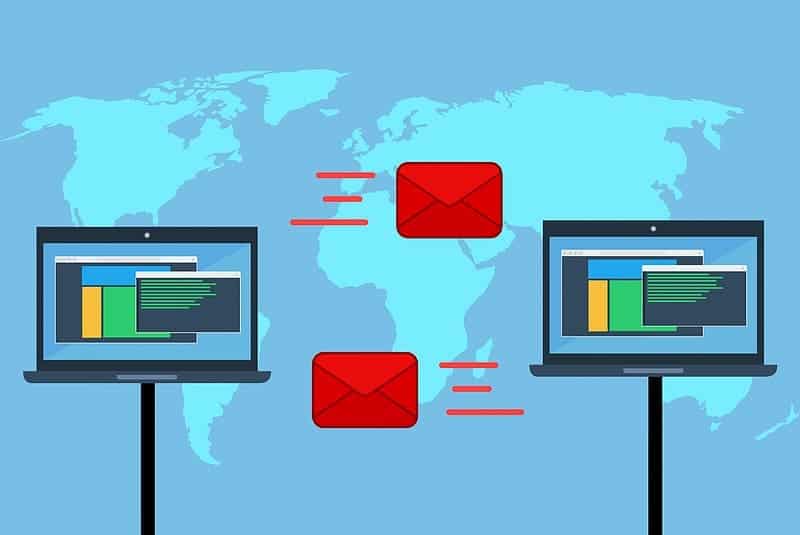Email marketing is an effective method of marketing your healthcare brand and getting the word out about your medical practice. It can help you gain new patients by offering them content tailored to their unique needs and therefore encouraging them to enlist your services.
Marketing through email enables you to keep in touch with customers and build long-lasting relationships. Your emails help cement your brand in people’s minds, increasing the chances of them turning to you in their time of need. It gives that personal touch to your healthcare practice. This will foster trust and humanize your brand.
Email marketing is also an integral component of the growth of your hospital or healthcare practice. Without it, you may not have an influx of new patients and even your most loyal patients could slowly drop off one by one. Your current patients are your best resource for new patients. Referrals are a great way to grow your healthcare practice. The healthcare industry has transformed, becoming a quality-based industry centered on patients. So for your hospital to keep up, email marketing is a must-have.
5 Email Marketing Strategies That Work
Creating a successful email marketing campaign for your healthcare business requires more than just collecting patient email addresses and sending them updates. Let’s look at the following healthcare email marketing strategies.
1. Segment your subscribers
You can segment your email list by grouping your patients based on their medical records, age, gender, location, and more. For this purpose, you can use public records to bring your email marketing campaigns to the next level and grow the open rate.
Segmenting serves to create a much more targeted email campaign. This will allow you to send only relevant content to your patients, therefore allowing you to make your emails dynamic and personalized. This will create trust in your brand and build a long-lasting relationship between you and your patients.
2. Send mobile-friendly emails
As of October 2020, as much as 61% of all marketing emails were opened on a mobile device. These are huge numbers. So mobile-friendly emails are a useful resource for your healthcare business.
So, how exactly can you make your emails mobile friendly?
- Keep the emails short and concise.
- Use an enticing pre-header text to provide context and entice the recipient to open your email.
- Compose short subject lines.
- Provide a clear call to action (CTA) to the recipient.
- Use a single column template that has a simple layout that is easy for the recipient to navigate.
- Avoid tiny fonts.
- Use images that are essential to your email and which are small (to reduce load times and bandwidth).

3. Utilize social media
By combining social media with email marketing, you can reach a lot of people and therefore gain new customers. How do you do this? You can add a link to a sign-up landing page on Instagram, Facebook, and any other social media profile. This will enable followers who are potential patients to opt-in to your email list and you can have a more direct and effective method of communicating with them. So when they need any healthcare services, you’ll be at the top of their mind.
4. Provide informative content in your emails
One of the major things that determine whether a subscriber will give any mind to reading your email is the content of the email. So instead of always sending promotional emails, consider sending informative content that is useful to them. This will inject a feeling of trust and encourage them to seek your healthcare services whenever something happens.
5. A/B (Split) Test Your Messages
A/B testing involves sending one variation of an email campaign to a subset of your subscribers and a different variation to another subset. The ultimate goal of this is to work out which variation of the campaign garners the best results. This will tell you how effective your email marketing campaign is and where you will need to make changes.
The more you split test your messages, the more information that you’ll have for future emails. This will help you to achieve a successful email marketing strategy.
The first step in setting up an effective A/B test is deciding on what you will test. You can test a lot of variables. However, it is advisable to test only what will get you accurate results. These variables can be:
● The Call to action.
● Subject lines (example long subject line vs short one)
● Personalization (example Mr. Smith vs Mathew)
● Body text/ Content (example informative vs promotional)
● Images used (example large vs small)
● “From” name and sender address
● Email send times (example; morning vs afternoon or evening vs midnight)
By designing emails using these variables, you can analyze their performance across various subsets to find out what is effective. For example, emails that mention the recipient’s name, use emojis or questions in the subject line, use numerous images, contain informative content, and have a reliable “from” name are more likely to be more effective than those that lack these qualities.
For your healthcare business, these variables may be different so take your time in curating the A/B Test emails. Most email campaign software has in-built tools for A/B testing. These will be of great help to you.
Once you’ve run your email campaign using the two different email versions, you will have to look at the results. The different categories of results you’ll want to look at include:
● The open rate.
● The click-through rate.
● The conversion rate when they land on your website.
You will then gain an understanding of how the variables influenced the results. You will get to see what works and what doesn’t. This will make it possible for you to curate the right messages for your email subscribers to entice them to seek your healthcare services.

Personalize Your Email List
Know your clients
To reap the benefits of your email campaign, you need to understand your target audience. You can achieve this by segmenting your email list based on their age, gender, medical conditions, and more. All this information you can get by using email lookup tools. By understanding this, you will be able to send emails that relate directly to each of your subscribers.
● Use catchy subject lines
If you want your email content opened, read, and clicked on, then it all starts with a catchy subject line. A subject line is the first impression and is a ticket to ensure your emails stand out from others in your subscribers’ crowded inbox.
A catchy subject line inserts details that are relevant to the recipient. To personalize your email list, you can include details such as their name, medical condition, or any other personal information you may have in the subject line. This will encourage them to open your email and respond.
● Make consumers feel special
To personalize your email list, you need to make your patients feel special. You can only do this by gaining their trust and loyalty. You can make them feel special by offering them something extra in addition to health tips such as discounts, free visits, etc. You should also take your time to become familiar with them by asking the right questions. An email lookup tool will help you get the information you need to make them feel special.
You could also consider wishing them a happy birthday! All these will foster trust and long-term relationships.
● Include their name in the body text
By using the name of your patient in the content of your email, it creates more of a personal feel and less of a detached one. This will make them more comfortable in reading your emails and engaging with your content.
● Consider sending times
Your patients may be in different time zones. To create a personalized feel, consider using automated sender tools so they receive emails at appropriate times.
Conclusion
Email marketing is an essential tool for growing your healthcare practice. If used properly it can attract numerous patients and build trust. Make sure to keep these tips handy for when you’re ready to implement your first (or next) email marketing campaign.











